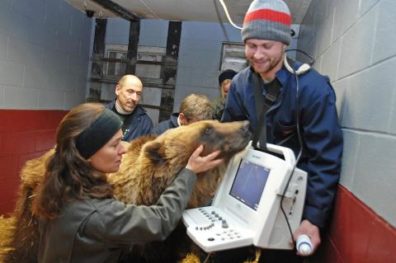Being a human couch potato can greatly increase fat accumulation, hasten the onset of Type II diabetes symptoms, result in detrimental blood chemistry and cardiovascular changes, and eventually, bring about one’s death.

Large hibernators such as bears however have evolved to adapt to and reverse similar metabolic stressors they face each year before and during hibernation to essentially become immune to these ill effects.
New RNA sequencing-based genetic research conducted at Washington State University’s Bear Research, Education, and Conservation Center shows grizzlies express a larger number of genes in preparation for, and during hibernation to cope with such stressors, than do any other species studied.
The king-of-the-gene switching superlative even holds true when one corrects for the different sample sizes used in other hibernation studies.
The work was conducted in Pullman, Washington, home of the only university-based captive grizzly bear population in the world.
The WSU results while somewhat expected, far exceeded the level of differing genetic expression seen before.
“The number of differentially expressed genes is striking,” said WSU Associate Professor, Joanna Kelley.